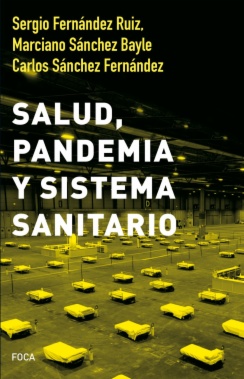Estás filtrando por
Se encontraron 731 resultados en recursos
Compartir este contenido
Effect of Oxygen Contamination on Propionate and Caproate Formation in Anaerobic Fermentation = Efecto de la contaminación con oxígeno en la formación de propionato y caproato en fermentación anaeróbica
Copia el enlace o compártelo en redes sociales
Neuronal delivery of antibodies has therapeutic effects in animal models of botulism = La administración de anticuerpos en neuronas tiene efectos terapéuticos en modelos animales del botulismo
Compartir este contenido
Neuronal delivery of antibodies has therapeutic effects in animal models of botulism = La administración de anticuerpos en neuronas tiene efectos terapéuticos en modelos animales del botulismo
Copia el enlace o compártelo en redes sociales
Population prevalence and trends of oral clefts in Colombia: analysis by departments
Compartir este contenido
Population prevalence and trends of oral clefts in Colombia: analysis by departments
Copia el enlace o compártelo en redes sociales
The effect of environmental variable selection in the prediction of Seasonal Influenza cases using machine learning
Compartir este contenido
The effect of environmental variable selection in the prediction of Seasonal Influenza cases using machine learning
Copia el enlace o compártelo en redes sociales
Inter-individual variability of Lifetime Stress exposure on the oncological characteristics of TNBC patients: Do coping styles moderate the relationship? Role of SNS, HPA axis, and Cortical structures
Compartir este contenido
Inter-individual variability of Lifetime Stress exposure on the oncological characteristics of TNBC patients: Do coping styles moderate the relationship? Role of SNS, HPA axis, and Cortical structures
Copia el enlace o compártelo en redes sociales
Polyphenol intake and epithelial ovarian cancer risk in the European prospective Investigation into Cancer and Nutrition (EPIC) study
Compartir este contenido
Polyphenol intake and epithelial ovarian cancer risk in the European prospective Investigation into Cancer and Nutrition (EPIC) study
Copia el enlace o compártelo en redes sociales

Envejecer en el siglo XXI
Compartir este contenido
Envejecer en el siglo XXI
Copia el enlace o compártelo en redes sociales

Salud, pandemia y sistema sanitario
Compartir este contenido
Salud, pandemia y sistema sanitario
Copia el enlace o compártelo en redes sociales

Aproximaciones a la medicina tradicional china
Compartir este contenido
Aproximaciones a la medicina tradicional china
Copia el enlace o compártelo en redes sociales
Fundamentos de medicina: manual de hipertensión arterial
Compartir este contenido
Fundamentos de medicina: manual de hipertensión arterial
Copia el enlace o compártelo en redes sociales
Selecciona las Colecciones en las que vas a añadir el contenido
Para consultar los contenidos añadidos busca la opción Tus colecciones en el menú principal o en Mi perfil.
